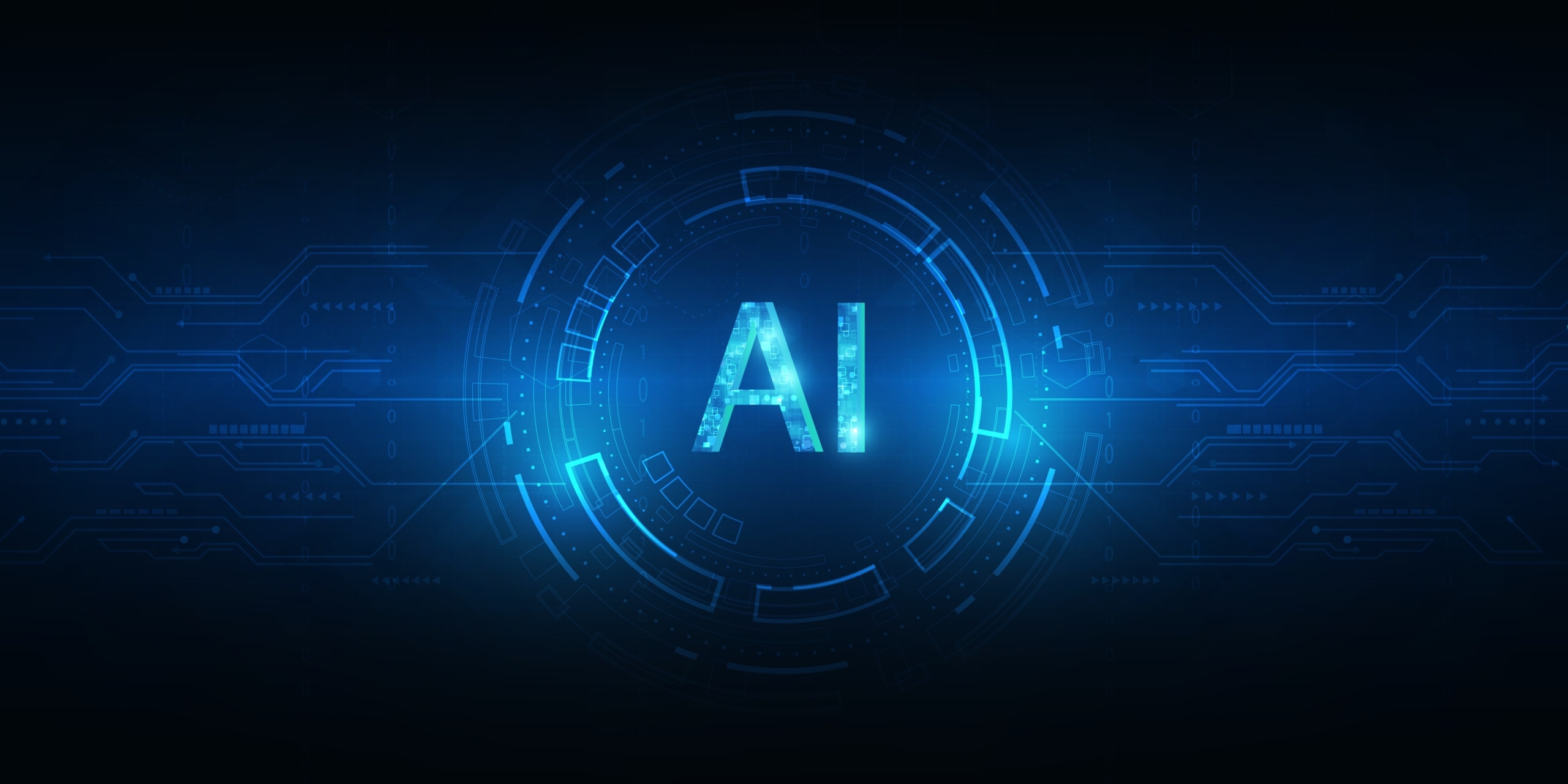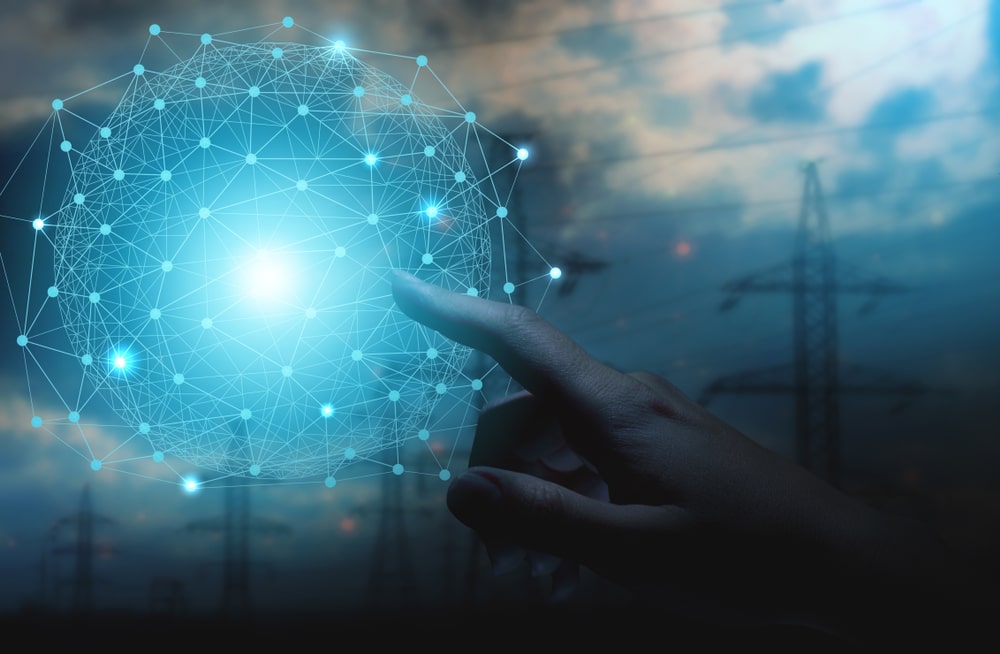
Energy 4.0 – Artificial Intelligence

Energy 4.0 - Artificial Intelligence
As we continue with our Energy 4.0 series, in this article we look at another key element of the revolution: Artificial Intelligence or AI.
With the energy industry continually looking for effective and efficient ways to conduct business, Artificial Intelligence is becoming more and more important and is having great potential for the future design of the energy system.

What is Artificial Intelligence?
Let’s first begin with a quick definition of what artificial intelligence, or AI, is. A central aspect of intelligence in AI is that it makes decisions based on information ( a lot of data ) and carries out actions with regard to its goals. In other words, this means that the AI learns from experience and makes new decisions independently. Said another way, it is the enabling of machines to perform tasks intelligently.
“Central to Artificial Intelligence is that it makes and implements decisions based on data (information) independently with regard to the set goals.”
Using Artificial Intelligence
We now have an idea of what AI is, so let’s now look at how AI plays a role in the energy industry, and specifically in this article, the “smart grid”.
On the whole, AI is proving its value to the energy transition. It is already showing measurable improvements in renewable energy forecasting, grid operations and optimization, coordination of distributed energy assets and demand-side management, and materials innovation and discovery.
However, AI’s application in the energy sector has proven promising so far, but innovation and adoption still remains a bit limited. This slow adoption rate presents a tremendous opportunity to accelerate transition towards the zero-emission, highly efficient and interconnected energy system we need tomorrow.

Meeting "Peak" Electrical Needs
The current power grid system was not built to accommodate the new diverse energy sources that feed into it, especially not the rise in renewable resources. Plus there is an increase with the decentralization and digitalization of the power grid. As it grows through new sources, the power grid is becoming more difficult to manage the increasing number of grid participants and more so keep the grid in balance. How do we avoid a catastrophic power failure?
It was, and still is, done through the use of ‘peaker plants’. When demand outpaces supply, utilities turn on backup fossil fuel-powered plants at a minute’s notice to avoid a cascading catastrophe. This procedure is the most expensive and wasteful part of business for these companies, manifesting itself in higher electricity bills for consumers and enhanced greenhouse gas emissions into the atmosphere.
The ‘peaker plant’ solution requires continual evaluation and analysis of huge amounts of data, and it is very time consuming. And when a catastrophe is imminent, every second counts. This is where Artificial Intelligence can help process this large amount of data as quickly and efficiently as possible, and then learn from what it has processed for future issues that arise.
“AI holds far greater potential to accelerate the global energy transition, but it will only be realized if there is greater AI innovation, adoption and collaboration across the industry.”
Making The Electrical Grid Smarter
This leads to the idea of a Smart Grid. These networks transport not only electricity but also vast amounts of data. Especially with an increasing number of volatile power generation plants such as solar and wind, it is becoming more and more important for power generation to react intelligently to consumption (and vice versa). AI can then evaluate, analyze, and control the data of the various participants (consumers, producers, storage facilities) connected to each other via the grid.
In addition, the AI can stabilize the power grid by, for example, detecting anomalies in generation, consumption, or transmission in near real time. It can then use this data to find and develop the best suitable solution for that situation.
Further, AI can help coordinate maintenance work and determine optimal times for the maintenance of networks or individual systems. This helps minimize costs and loss of profit as well as disturbances of the network operation.

Raised Concerns
It appears that Artificial Intelligence is a great solution to our current problems. Let’s now look at some of the issues raised by the use of AI.
- The Data: Artificial Intelligence is only as smart as its data. This is one of the biggest sticking points. The topics of data protection and data security are some of the greatest weak points for the use of Artificial Intelligence.
- Cybersecurity: Energy supply and the entire energy system are part of our critical infrastructure. This is why cybersecurity is becoming more and more important today and in the future in order to protect the highly networked power grid from attacks and data theft from the outside. There are already strict security requirements for participants in the electricity market in the area of data protection and data security, though.
- Counter Strike: Contrary to the widespread opinion that AI makes the power grid less secure, AI can actually make an important contribution in the fight against cyberattacks. Since it can quickly check large amounts of data in very little time, it is able to quickly identify any deviations and course correct it. AI can also draw conclusions from past cyberattacks.
- Smart Homes: Many end users are critical of AI, in relation to their smart home technologies. This is understandable, because the data of the most private space that reveals a lot about its users is collected. These fears are somewhat justified because there is still no regulation on how to handle this sensitive data. In order to give the energy industry and in particular end consumers more confidence in the AI, it must be clearly communicated how the data is used and by whom, and data security must be guaranteed.
- Power Consumption: A big criticism of AI is the power consumption of Artificial Intelligence itself. In order to process all of this very large amounts of data, AI must consume a lot of electricity. AI usually lives in very large data centres with thousands of computers to maximize its computing power. Possible solutions to this dilemma include the physical proximity of data centres and renewable energy generation plants, delay power-intensive computing operations to times when more power is available, more energy-efficient hardware, or programming that requires as little computing power as possible.
In the energy industry, AI offers a multitude of suitable application scenarios that will support the energy transition and a climate-friendly energy system. It will be crucial, however, to protect user data and make the use of AI transparent and comprehensible.
Conclusion
Artificial Intelligence is by no means a silver bullet, and no technology can replace commitments to reducing emissions. Used well, AI will accelerate the energy transition while expanding access to energy services, encouraging innovation, and ensuring a safe, resilient, and affordable clean energy system. It is time for industry to lay the foundations for this AI-enabled energy future, and to build a trusted and collaborative ecosystem around AI for the energy transition.
We offer our specialized services to not only meet, but go above and beyond your expectations. To learn more reach out to Marci Hewitt, Renewables & Surface Team Lead (mhewitt@aimland.ca | 403-452-3713) OR Brad Cockerill, PM Utilities (bcockerill@aimland.ca | 403-648-5436)
#Energy4.0 #AI #AITransformation #SmartGrid #CanadianEconomy #GlobalKnowledge #AlbertaRenewableIndustry









